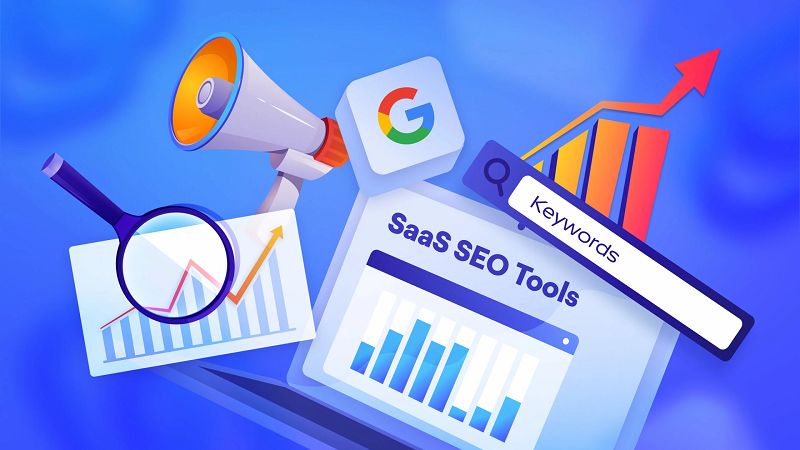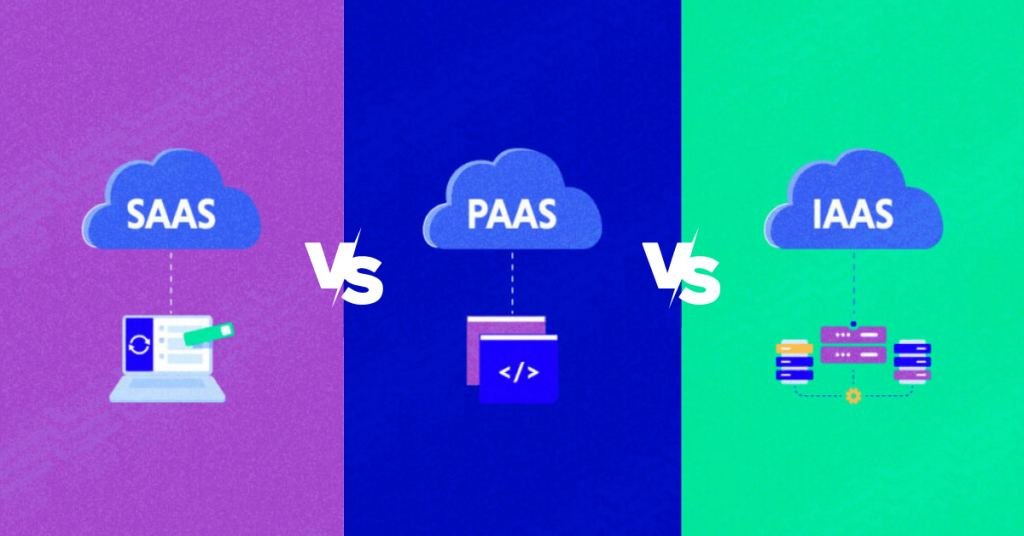In this comprehensive guide, we will delve into the world of SaaS SEO (Search Engine Optimization) and explore how it can drive success for your SaaS (Software as a Service) business in 2025. As the SaaS industry continues to grow rapidly, standing out from the competition and gaining visibility online has become more crucial than ever. By mastering SaaS SEO, you can ensure that your software solution reaches the right audience and thrives in the digital landscape.
What Is SaaS SEO?
SaaS SEO refers to search engine optimization strategies and techniques specifically tailored for Software as a Service (SaaS) companies. It refers to a software delivery model in which applications are hosted on the cloud and accessed by users over the Internet.
SaaS SEO aims to improve the visibility and organic search rankings of SaaS websites in search engine results pages (SERPs) for relevant keywords. The goal is to attract organic traffic and potential customers to the SaaS company’s website, leading to increased brand awareness, user sign-ups, and ultimately, conversions.
However, SaaS SEO requires a deep understanding of the SaaS industry, target audience, and competitive landscape. It combines technical optimization with content marketing and user experience to attract organic traffic and drive business growth for SaaS companies.
Benefits of SEO for SaaS Businesses
Search Engine Optimization (SEO) can offer several significant benefits for SaaS (Software as a Service) businesses. Here are some of the key advantages:
1. Increased organic visibility:
SEO helps improve your website’s visibility in search engine results pages (SERPs), allowing you to reach a wider audience. By optimizing your website’s content, meta tags, and other elements, you can improve your rankings for relevant keywords and attract more organic traffic.
2. Targeted traffic:
SEO enables you to target specific keywords and phrases that are relevant to your SaaS business. This means you can attract highly targeted traffic to your website, consisting of users actively searching for the solutions you offer. This improves the quality of your website visitors and increases the likelihood of conversions.
3. Improved brand credibility and trust:
Appearing on the first page of search results for relevant keywords helps establish your SaaS business as a credible and trustworthy source. Users tend to trust websites that rank higher organically, which can positively impact their perception of your brand.
4. Cost-effective marketing strategy:
Compared to other forms of digital marketing, SEO can be a cost-effective strategy for long-term success. While it may require an initial investment in optimization efforts, the ongoing benefits can outweigh the costs, especially when compared to paid advertising. As your website’s organic visibility improves, you can reduce your reliance on paid advertising and benefit from a consistent stream of organic traffic.
5. Increased lead generation and conversions:
By targeting relevant keywords and optimizing your website’s content, you can attract users who are actively looking for the solutions you provide. This can result in higher lead generation and conversion rates. When your website ranks well and aligns with users’ search intent, it becomes easier to convert them into paying customers.
6. Enhanced user experience:
SEO involves optimizing your website’s structure, navigation, and content to provide a better user experience. A well-structured and user-friendly website is more likely to engage visitors, encourage them to explore further, and increase the chances of conversions. Additionally, search engines consider user experience as a ranking factor, so improving your website’s usability can have a positive impact on your SEO efforts.
7. Long-term sustainability:
Unlike some other marketing strategies that yield short-term results, SEO focuses on building a strong foundation for your online presence over the long term. By consistently optimizing your website and staying up-to-date with search engine algorithms, you can maintain and even improve your rankings, resulting in sustained organic traffic and business growth.
By investing in SEO, you can position your SaaS business for long-term success in the digital landscape.

SaaS SEO Ranking Factors
SaaS’s business model is easily explained, but search engine optimization takes a little more explanation. There are a lot of things that can change a website’s position on Google. With an AI-powered search engine, all of these variables are constantly shifting. For this reason, it often helps to have some background knowledge in the field. The relative relevance of the following criteria in determining your site’s Google ranking:
User Engagement Metrics:
User engagement metrics refer to the measurements that indicate how users interact with your website. Search engines consider these metrics as indications of user satisfaction and relevance. Examples of user engagement metrics include click-through rate (CTR), bounce rate, dwell time, and conversion rate.
A high CTR suggests that users find your search listings compelling, while a low bounce rate and longer dwell time indicate that users are engaging with your content and finding value in it. Good user engagement metrics can positively impact your SEO rankings.
Link Metrics:
Link metrics involve the quality and quantity of backlinks pointing to your SaaS website. Backlinks from reputable and authoritative websites are seen as votes of confidence, indicating that your website has valuable content. Search engines consider these links as signals of your website’s credibility and relevance.
However, it’s important to focus on high-quality, relevant backlinks rather than sheer quantity. Building a strong backlink profile through outreach, content promotion, and networking can positively impact your SEO rankings.
Onsite Content:
Onsite content refers to the content that exists on your SaaS website. It includes various types of content, such as landing pages, blog articles, case studies, and product documentation. Optimizing your onsite content involves creating high-quality, informative, and relevant content that addresses the needs and pain points of your target audience.
Keyword optimization, proper formatting, and clear and concise writing are essential aspects of onsite content optimization. Well-optimized and valuable content helps search engines understand your website’s relevance and can improve your rankings.
Technical Structure and Usability:
The technical structure and usability of your SaaS website play a vital role in SEO. This involves aspects such as site speed, mobile-friendliness, crawlability, indexability, structured data markup, XML sitemaps, and user-friendly navigation. A technically optimized website ensures that search engines can effectively crawl and understand your content.
It also provides a positive user experience, making it easier for visitors to navigate, find information, and engage with your website. Good technical structure and usability contribute to improved SEO rankings.
These four factors—user engagement metrics, link metrics, onsite content, and technical structure and usability—work together to enhance your SaaS website’s visibility, relevance, and authority in search engine rankings. By focusing on these factors and implementing best practices, you can improve your SaaS SEO performance and attract more organic traffic to your website.
SaaS SEO Strategies To Improve Website Ranking
Improving your SaaS SEO ranking requires a strategic approach and consistent effort. Here are some effective ways to enhance your SaaS website’s SEO and increase its rankings:
1. Keyword research:
- Identify primary keywords: Start by understanding the main keywords that are relevant to your SaaS business. Consider the terms that your target audience would likely use when searching for your product or service.
- Long-tail keywords: Look for long-tail keywords that are more specific and have lower competition. These keywords often have higher intent and can bring in more targeted traffic.
- Competitive analysis: Analyze your competitors’ websites and identify the keywords they are targeting. This can help you discover new keyword opportunities or validate your existing keyword choices.
2. On-page optimization:
- Title tags: Craft unique and compelling title tags for each page on your website. Include your target keyword naturally within the title tag while keeping it concise and engaging.
- Meta descriptions: Write persuasive meta descriptions that accurately summarize the content of each page. Incorporate relevant keywords to improve click-through rates from search results.
- Headings: Use heading tags (H1, H2, etc.) to structure your content and make it more readable. Include keywords in your headings when appropriate, but prioritize readability and user experience.
- Content optimization: Optimize your content by naturally incorporating your target keywords throughout the text. Avoid keyword stuffing and focus on creating valuable, informative, and well-written content.
3. High-quality content creation:
- Blogging: Maintain an active blog where you publish regular, high-quality content. Write articles, tutorials, and guides that address common pain points or provide solutions to your target audience’s challenges.
- Keyword optimization: When creating content, ensure that your target keywords are integrated naturally within the text. Focus on providing value and answering user queries rather than keyword density.
- Originality and depth: Aim to create unique and comprehensive content that differentiates you from your competitors. Explore different angles, incorporate data or research, and provide in-depth insights to establish your authority in the industry.
- User engagement: Encourage user engagement by incorporating interactive elements like polls, surveys, or comments. Engage with your audience by responding to comments and fostering discussions.
4. Technical SEO:
- Page load times: Optimize your website’s speed by compressing images, minifying CSS and JavaScript, and leveraging browser caching. Use tools like Google PageSpeed Insights to identify specific areas for improvement.
- Mobile-friendliness: Ensure your website is mobile-responsive and provides a seamless experience across different devices and screen sizes. Mobile optimization is crucial as search engines prioritize mobile-friendly websites.
- XML sitemaps: Create and submit XML sitemaps to search engines to help them crawl and index your website more efficiently. Include all relevant pages and update the sitemap whenever new content is added.
- Structured data markup: Implement structured data markup, such as Schema.org, to provide search engines with additional context about your content. This can enhance the appearance of your search listings with rich snippets and other enhanced features.
5. Backlink building:
- Content promotion: Develop high-quality content that naturally attracts backlinks. Promote your content through social media, email outreach, and engaging with influencers and industry publications.
- Guest posting: Seek opportunities to contribute guest posts to reputable websites in your industry. Focus on providing valuable content that includes relevant links back to your website.
- Partner collaborations: Collaborate with complementary businesses or industry influencers to create content, co-host webinars, or participate in joint marketing initiatives. This can result in backlinks and exposure to a wider audience.
6. User experience optimization:
- Navigation and structure: Ensure that your website has a clear and intuitive navigation structure. Make it easy for users to find what they are looking for and navigate between different sections of your site.
- Mobile responsiveness: Test your website across various mobile devices to ensure it displays properly and is user-friendly. Mobile optimization is vital, as search engines prioritize mobile-friendly websites in their rankings.
- Page load times: Optimize your website’s speed to provide a fast and seamless user experience. Compress images, minimize HTTP requests, and leverage caching techniques to improve loading times.
- Calls to action (CTAs): Incorporate clear and compelling CTAs throughout your website to guide users towards desired actions, such as signing up for a trial, requesting a demo, or making a purchase.
- Usability testing: Conduct user testing to identify any pain points or areas of improvement on your website. Collect feedback from real users and make necessary adjustments to enhance their experience.
7. Local SEO (if applicable):
- Google My Business: Create and optimize your Google My Business listing, ensuring accurate and up-to-date information about your SaaS business. Encourage customers to leave reviews and respond to them promptly.
- Local keywords: Incorporate location-specific keywords in your content, titles, meta descriptions, and headings when relevant. This can help your website appear in local search results.
- Local directories: Ensure that your business is listed accurately in relevant local directories and review platforms. Consistent NAP (name, address, phone number) information across these platforms is crucial for local SEO.
8. Analyze and refine:
- Google Analytics: Regularly review your website’s performance using Google Analytics. Monitor metrics such as organic traffic, bounce rate, time on page, and conversion rates. Identify trends, strengths, and areas that need improvement.
- Google Search Console: Utilize the Search Console to analyze how your website is performing in search results. Monitor indexing status, submit sitemaps, identify crawl errors, and review keyword rankings.
- A/B testing: Experiment with different variations of your website’s elements, such as headlines, CTAs, and landing page designs. Use A/B testing to measure the impact on user engagement, conversion rates, and SEO metrics.
- Stay informed: Keep up-to-date with industry news, algorithm updates, and SEO best practices. Follow reputable SEO blogs, forums, and resources to ensure that your strategies align with the latest trends.
Check out Step-by-Step SaaS SEO Checklist for Dominating Search Rankings.

By implementing these strategies and consistently monitoring and refining your SEO efforts, you can improve your SaaS website’s ranking in search engine results and attract more targeted organic traffic.
Top 10 SaaS SEO Tools You Should Try
- SEMrush: A comprehensive SEO tool that offers keyword research, competitor analysis, backlink analysis, site auditing, and more.
- Moz: Provides keyword research, rank tracking, site auditing, backlink analysis, and on-page optimization features.
- Ahrefs: Offers a robust set of SEO tools, including keyword research, backlink analysis, content explorer, rank tracking, and site auditing.
- Google Search Console: A free tool by Google that helps monitor and optimize your website’s presence in search results, providing valuable insights and data.
- Screaming Frog: A website crawler that helps identify technical SEO issues, analyze on-page elements, and generate XML sitemaps.
- Yoast SEO: A popular WordPress plugin that assists in optimizing content for search engines, including keyword optimization, readability analysis, and meta tag management.
- Serpstat: Offers keyword research, backlink analysis, rank tracking, site auditing, and competitor analysis tools, all in one platform.
- Rank Math: Another powerful SEO plugin for WordPress that assists with on-page optimization, schema markup, XML sitemaps, and other SEO enhancements.
- SpyFu: Provides competitive intelligence, keyword research, and PPC campaign analysis to help improve your SEO strategies.
- BuzzSumo: A content marketing tool that helps identify popular topics, analyze content performance, and discover influencers for better SEO and content planning.
These tools offer a range of features to assist with keyword research, competitor analysis, site auditing, backlink analysis, and content optimization, making them valuable assets for SaaS companies looking to enhance their SEO efforts.
Conclusion
By implementing the strategies and techniques outlined in this ultimate guide, you can unlock the full potential of SaaS SEO in 2025. Remember that SaaS SEO is an ongoing process, requiring continuous monitoring, optimization, and adaptation to changing search algorithms and user behaviors.
Embrace the power of SaaS SEO to improve your online visibility, attract qualified leads, and ultimately drive the growth and success of your SaaS business. For further learning and implementation, explore the additional resources and tools provided.
FAQs – SaaS SEO
SaaS in SEO typically refers to optimizing the online presence, website, and content of SaaS companies to improve their search engine rankings, organic visibility, and attract relevant organic traffic. It involves implementing SEO best practices, keyword research, on-page optimization, technical optimization, content creation, and link-building strategies to increase the visibility and discoverability of SaaS websites in search engine results pages (SERPs).
SaaS content writing refers to the creation of written materials or content specifically tailored for Software as a Service (SaaS) companies. It involves producing informative and persuasive content such as blog posts, website copy, whitepapers, case studies, and social media content to engage and educate the target audience about the SaaS product or service.
B2B SaaS content refers to the creation of written materials or content specifically targeted at businesses (B2B) in the context of Software as a Service (SaaS). The content aims to educate, attract, and convert potential B2B customers by highlighting the value, features, and benefits of the SaaS offering in a business context.
No, SEO is not a waste of money. In fact, it is an effective long-term investment for businesses looking to improve their online presence and drive organic traffic. SEO helps increase visibility in search engine results, which can lead to higher website traffic, brand exposure, and potential customer acquisition. By optimizing your website and content for search engines, you can attract relevant, organic traffic that is more likely to convert into customers. While SEO results may take time to manifest, the benefits of improved search rankings and organic traffic can have a significant and lasting impact on your business’s online success.

